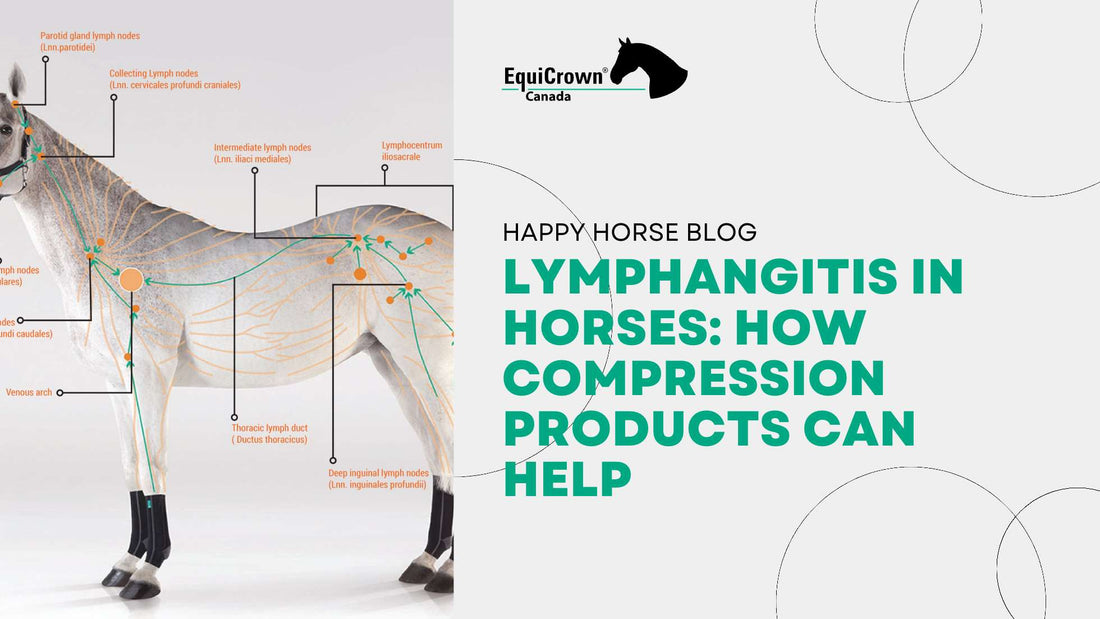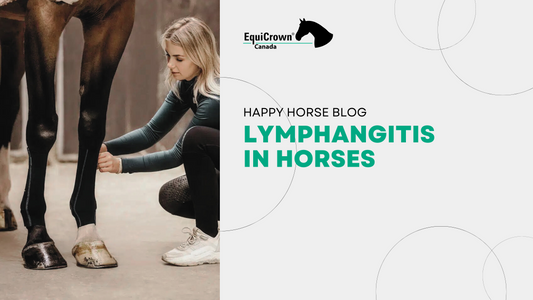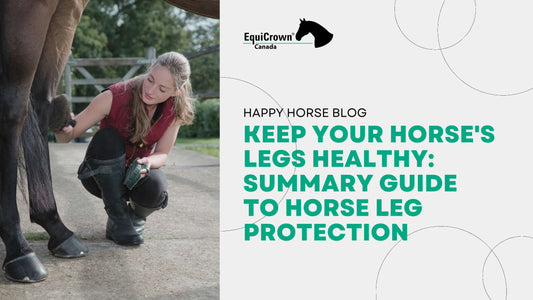
Lymphangitis in Horses: How Compression Products Can Help
Lymphangitis is one of those terms that can send a cold shiver down a horse owner’s spine. But what is lymphangitis, and how can you help your horse if he suffers from it? That’s what you are about to find out from this article.
We’re going to answer some of the most common horse health questions you may have about lymphangitis, such as:
- What is Lymphangitis
- What’s the function of the Horse Lymphatic System
- How compression products can help horses recover after Lymphangitis
Read on to find out how horse leg compression products can help fight the disease and get your horse to be back up and running as quickly as possible.
Please note that this article is not meant to offer a treatment or replace a veterinarian consult. It’s only meant to give you information on the disease to understand better how your horse’s lymphatic system works and what can go wrong.
Please see your veterinarian urgently if you notice anything wrong with your horse.

The Importance of the Horse Lymphatic System
To better understand Lymphangitis and how to help a horse who suffers from it, we’ll first have to know a little bit more about the
horse’s lymphatic system, how it works, what it does, and its importance.
The lymphatic system is vital for the health of a horse, and it's in charge of protecting the horse from infections, as a critical part of the immune system. It mainly consists of a vast structure of vessels and nodes that maintain fluid balance and cellular health.
Within the lymphatic system, Lymph fluid surrounds the tissues. In a healthy horse, any extra fluid that can be found in the tissues drains into the lymph vessels. There, it is filtered by the lymph nodes. The lymph nodes are specialized structures containing lymphocytes, which are cells that help destroy anything harmful to the body.
Then, the fluid drains into the bloodstream and continues its standard circuit within the body.
Here’s a representation of the horse’s lymphatic system to give you a better understanding of its complexity and how it functions.

What is Lymphangitis?
Now, let’s get back to lymphangitis to find out more about what is causing it and how we can help.
Simply put,
lymphangitis is an inflammation of the lymphatic system that occurs in the horse’s leg. Most of the time, inflammation is caused by a bacterial infection.
It may be caused by skin infections or an infection in any part of the body, as it’s a secondary infection. This means that the infected lymph fluid in one area of the body moves to the lymph vessels, causing them to get contaminated, too.
The symptoms that should raise the alarm have an acute onset, which means they are sudden and intense. One of the horse’s legs, usually a hind leg, gets hugely swollen, along with an elevated temperature.
Also, the horse might not eat, be depressed, and in extreme pain and discomfort. Some horses might tremble, breathe rapidly, and sweat.
If you see any of these signs, call your vet. Remember that Lymphangitis is a severe health issue, and seeing a veterinarian is a must. This is not a wait-and-see disease; don’t hesitate since your horse needs specialized help as fast as possible.
Compression products are not meant to replace a doctor’s help, and they can only be helpful after the horse received the treatment he needs.
How compression products can help to recover after Lymphangitis
To treat the acute form of Lymphangitis, the vet will prescribe antibiotics and anti-inflammatories, along with some pain medication to help your horse get on his feet since movement is necessary to help fluid to travel back up the leg.
But what happens after the treatment? How can we help the horse’s leg back to its initial, healthy state? Removing any residual fluid from the horse’s leg and reducing the risk of a new infection is crucial to your horse’s long-term health.
Once the horse’s temperature and infection are under control, the next step is to use horse leg wraps to make sure you help your horse get rid of the residual fluid and start moving.

You can use an EquiCrown compression wrap to help the leg heal and reduce the risk of the disease returning.
Since the horse’s lymph system does not work in isolation, you need to use the compression wraps on both the affected leg and the parallel leg. In cases where the horse has suffered multiple disease occurrences, we recommend putting compression on all the horse’s legs.
Remember, your horse is an athlete by nature, and good circulation is critical to his health,
well-being, and performance. The EquiCrown compression wrap helps your horse’s lymph fluid move and bring oxygen-rich blood to the legs.
Contact our team to get personalized help for your horse. Our team is specialized in the long-term management of horses with chronic lymphangitis, and we will be working with your veterinarian to avoid any future episodes.




